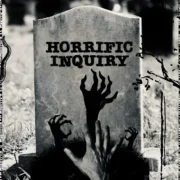Can Film Influence Reality?

Sam is 25 years old from the West Midlands region…
It may be fair to first point out that the question of this article has always been a conflicting issue that continuously floats around in the film industry. People often perceive the growing medium of cinema as a device for entertainment or as a brief, escapist distraction from society’s painful realities. This experience has impacted on how people think and behave within society, and Hollywood continue to question the extent to which films influence reality.
Some films may address identifiable stories, such as biographical dramas retelling a true story, while others unintentionally speak to society and often have dire consequences, like violent horror films. This article examines the complex ways in which films can be influential toward reality and argues that even processes of marketing and production as well as audience reactions are contributing dynamics to this debate.
Balancing A Fictional & Real Society
In the early stages of film production, people write scripts from their imaginations based on one of three things – a past experience in their own lives, an incident relating to one’s current circumstances or a potential occurrence or thought in society’s future. This could be elaborated or exaggerated on by a certain genre but almost every film has a background of reality, whether a true story or a book adaptation. A film’s entire idea is to formulate a written story and apply those words to life on the big screen. Even the separation between spectator and screen generates a fictional illusion, yet there is that emotional connection that may encourage reality.
Although often depending on genre, cinema allows us to embark into a fictional world while at the same time showing society as it is lived. In some ways, viewers are looking out their own eyes and perceiving a normal society within a fictional context. Even when not a fantasy film, viewers can almost literally transform themselves into a fantasy world. Character development and narrative structure are contributing factors to this engagement.
Real-life locations are often used, such as city shots of New York, London, Paris or Rome. We can all identify with them, but there are others that serve as features of a character’s lifestyle that viewers can relate to, which may include schools, churches, hospitals or restaurants. However, films can use exterior locations but do not literally shoot reality; instead exemplifying how society is expected to be.
For example, the James Bond franchise is known for its use of real locations despite being an adapted fictional book series by Ian Fleming. It has been a trademark feature of the series as viewers follow Bond on his adventures that take him across the world to defeat the villain. Particularly in the franchise’s most recent additions – Skyfall and Spectre, there have been clear sights of filming within London city centre. The Daily Mail confirmed that star Daniel Craig was spotted filming in London from 29th to 31st May 2015, with action sequences taking place around Trafalgar Square, The Mall and Whitehall. Each of these locations were closed for the shoot.

The idea of using elements of reality, such as real locations, allow viewers to perceive our society but within a fictional context that elicits entertainment values. Although most viewers may not realise this, they find most stories enjoyable because the on-screen events are not happening to them, that the scenes are outside the real world and viewers perhaps feel ‘safe’ between themselves and the screen. So if films are fictionalised stories, why have they been a heavy influence on reality? Some are exaggerated aspects of the world while there are others in which viewers enjoy seeing a fictional film and would like to make it into a reality.
Connections To Reality: Marketing And The Media
Aspects of a film’s production processes all serve as legitimate reasons to how and why cinema can influence reality. A script can be the source of a real life-event, and the particular casting choice of a character can influence a person and how they see their social identity. Films can cause a great influence on reality in post-production, specifically in its marketing and post-release stage. Particularly in more recent years, viewers are now more open to the media than ever before and this has perhaps encouraged fandom even more.
Materials like theatrical trailers and posters are resources to entice audience anticipation and promote the marketing and box-office outcome of a film’s release. An entire film can be retrieved faster these days as the Internet and social media help endorse it, and online film rental services such as Netflix, iTunes and Amazon Prime Video provide access. They can be viewed repeatedly and this easy access for viewers can encourage an incentive reaction.
Even the use of social media contributes to how film influences reality. For example, film stars (such as Robert Downey Jr, Samuel L. Jackson and Jessica Alba) create Twitter accounts which allow them to express moments and thoughts in their own lives. It is also an opportunity for fans to ‘feel’ closer to them. However, some consider social media as the “star killer” which almost breaks the relevant escapist elements of cinema which these stars are known for. It encourages their connections to not only fans but production companies and online publications, too.
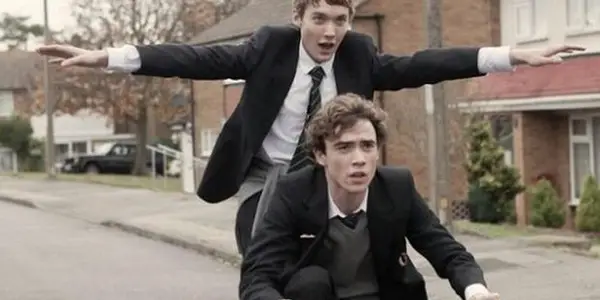
There are even films that raise this concern, such as Uwantme2killhim?. It does not strictly focus on how cinema affects reality, but how easily the tools of social media can influence how people behave in today’s society. The film is based on true events of two former friends who get wrapped up in complex online relationships and chatrooms which eventually leads to one stabbing the other.
One’s passion of certain films may also encourage how one might behave, think and feel within society. Halloween is a celebrated occasion on October 31st with a background that compliments supernatural beings such as ghosts and spirits. Today, Halloween is treated as an occasion for people to practise their excitement by making their fiction become a reality. Cinema is a resourceful tool for people to use. Fans dress as their favourite heroes or villains, ones that are either fan-favourites or those considered scary as part of horror or fantasy genres. This idea may sometimes be motivated by general fandom and passion for the industry, but the choices that people can make based on elements of cinema become obscurely clear in cases like Halloween or by watching certain films.
Another curious case that may suggest how close cinema representations come to society is the sights of extra-terrestrial beings or planet-like systems beyond our world. In 2009, a BBC News report revealed possible evidence of UFO (Unidentified Flying Object) sightings after the release of some science-fiction films. This article states a variety of documents unveiled that UFO sightings occurred in the mid-1990s, particularly after the release of Independence Day. The report unveils that the vast majority were discovered to be aircraft (960), satellites and debris (378), celestial objects like planets and stars (221) or freak weather (176). These uncanny occurrences may suggest a link between reality and fictional cinema, and that other planets and extra-terrestrial beings seen in films could be real beyond our own solar system. However, it may influence reality further in the sense that further research may be conducted to make further discoveries.
Other films have represented aspects of the natural world as evil and have actually changed society’s perception of certain beings. This has been primarily due to marketing and the production process. For example, Jaws is a story about a summer resort town with its citizens and beach-goers falling victim to a great white shark. Jaws became an instant success upon release. Its global recognition allowed viewers to understand this story between human and beast on the same scale as hero and villain.
Jaws represented the humans as the heroes with the great white shark as a monstrous villain, instead of a natural underwater creature. In fact, it was listed among the AFI’s list of greatest cinema villains and was simply known as “the shark”. The film portrayed the natural underwater world and its most powerful being (the great white) as evil, and has since changed our perception of sharks. A report from Live Science in 2010 acknowledged how Jaws has changed our view of the dominant underwater species after over 40 years. It also makes a relevant point concerning how Jaws could influence viewers to attack great whites in a vengeful manner after its villainous representation in the film. At the same time, though, it shows how anything outside of human beings is represented as monstrous when, in reality, great white sharks are natural creatures from another part of the world.
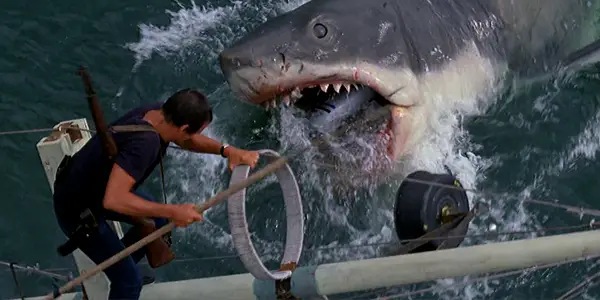
Most importantly, though, Jaws has since made viewers afraid to swim or even place their feet in the sea due to fear of being attacked. Although the narrative is a clear reason for this emotional reaction, much of it has also been due to Jaws’ marketing campaign. Its official poster features a girl innocently swimming with a shark edging closer to attack her is one thing, but its promotional taglines such as “the terrifying motion picture from the terrifying no. 1 best seller” and “you’ll never go in the water again!” are other contributing factors. This direct interaction with viewers allows viewers to react in a certain way. Nevertheless, the promotional campaigns of film marketing and publications led by the media allows viewers to create expectations and to elicit certain emotions. It can be in either a fearful or enjoyable manner, and the audience’s reactions can result in severe consequences.
Influence Of Genres: Copycat Crimes & Fandom
Arguably the most discussed and controversial aspect of how far film influences reality is the representation of violence. It is seen throughout a variety of genres from science-fiction, to action, to gangster films. However, the most effective genre that displays violence, and perhaps influences reality the most, is horror. Witnessing blood and gore is a defining characteristic of horror, and it can contribute to the viewers’ enjoyment of the genre. In this respect, much of how film influences reality can be an emphasis on its audience reception. Despite receiving accolades and critical acclaim, Stanley Kubrick‘s A Clockwork Orange was criticised as “being ahead of its time” for its overwhelming use of violence, and it became banned in various countries for many years.
A film can become controversial for its representations of violence. It could be for various reasons, such as possibly being inappropriate for sensitive viewers. However, the point of this article is to address that it can be controversial at the opposite angle – to how it can influence reality. Violence in film isn’t real as it is applied via make-up art, computer-generated effects or other materials. There is a sense of enjoyment from viewers upon witnessing this because there is no physical connection between them and the on-screen events. Fans may take enjoyment from witnessing films, and may be motivated to trigger their own enjoyment into a reality with dire consequences.
There have been cases of copycat violence inspired from films. For example, the murder of British infant James Bulger in February 1993 has been linked to horror film Child’s Play 3. The real-life killers were just 10 years old, the youngest murderers in recorded British history, and there have been claims that the duo killed Bulger in a reminiscence of a Child’s Play 3 scene. According to The Independent, the film contains scenes in which an possessed doll called Chucky (Brad Dourif) dies after being splattered with paint and having its face pulped; James Bulger was splashed with paint and battered to death. However, despite the accusations, there has never been any valid proof that the two boys were directly influenced by Child’s Play 3.
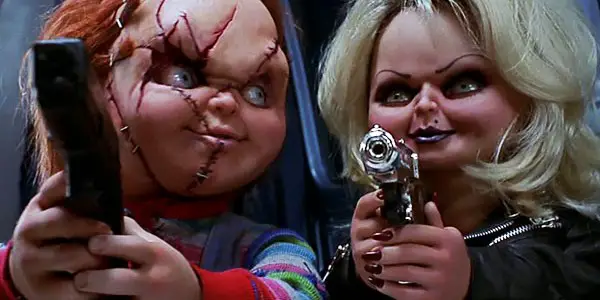
Another example is the 2012 Aurora Shooting incident involving James Holmes who invaded a cinema screening of The Dark Knight Rises and gunned down a number of attendees. This individual was inspired by the Joker’s villainous desire of destruction and violence, which motivated him to commit this public massacre. During his conviction trial, a Denver Post report revealed that Holmes had been diagnosed from a schitzotypal personality disorder. Its symptoms include extreme social anxiety, odd beliefs, behaviour and constricted expressions.
This revelation allowed people to realise that Holmes appeared reserved in his emotional reactions to his killings, but at the same time was aware of his actions and the consequences. As of 2015 Holmes has been convicted and sentenced to 12 consecutive life sentences without parole, and an additional 3,318 years in prison. This particular case may argue that cinema does not deliberately influence people to commit crimes, but instead is an easy source to entertain the faint-hearted or mentally-vulnerable.
Interestingly, though, Hollywood has addressed this issue within specific films through narrative. For example, Scream is a slasher film with c*cktails of blood and death but it touches upon how films can be influential sources of violence within society. The Ghostface serial killer(s) use them as a tool to manipulate and eventually kill their victims, sometimes out of revenge. Ghostface does not necessarily perceive films as a fan, but realises their often discouraging moralities in relation to violence. Nevertheless, cinema can influence reality in terms of violence as they are easy sources to access and viewers can become emotionally attached to them. With this in mind, though, anything that occurs during one’s lifetime may result in copycat violence with severe consequences.
Despite this, there are some films that can inspire reality for greater and often more notable causes. It is often drawn from fandom or a film’s genuine moralities. Films based on true stories may be an easy way to approach this, such as The Theory Of Everything, about living with a disability. However, films that became cultural favourites have generated newly found communities and businesses and have, consequently, become a reality today.
Forrest Gump became a global phenomenon after its release in summer 1994. It won the Academy Awards for Best Picture, Best Actor (Tom Hanks) and Best Director (Robert Zemeckis), but the global favouritism led to creating actual organisations in direct reference to the film. Forrest’s shrimping business known as Bubba-Gump Shrimp has become a real-life restaurant. The company was founded in 1996, two years after the film’s release, and has become a global chain across the world. Locations of Bubba-Gump Shrimp restaurants include various counties across American states and also in the British capital of London.
Or… Can Reality Influence Film?
Quite the contrary to what has been discussed so far, there are possibilities that raise the opposite question – could reality actually play a more significant part in film? History certainly seems to think so. The early cinema movements from World War I to the aftermath of World War II have reflected how a certain country’s film industry became damaged from painful realities. The art of German Expressionism reached a peak in the 1920s as it became a response from the country’s film industry following their World War I defeat. It developed from cultural forms such as paintings, dance, sculpture and also cinema.
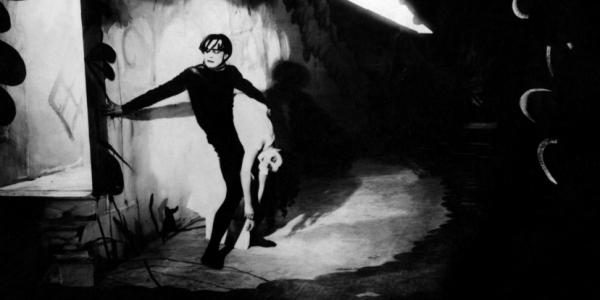
The German film industry perceived a distorted society after their defeat. Their known directors (such as F.W. Murnau, Robert Wiene and Fritz Lang) identified a unique style of filmmaking that would express those feelings. This need to confront the devastations of World War I and to address its aftermath would be exemplified through the art of German Expressionism. Reflecting this conflicted mind-set of Germany’s economic state in this style would actually revive German cinema entirely.
Characteristics of German Expressionist Cinema included dysfunctional settings, obscure camera angles, chiaroscuro lighting, extensive use of make-up and distorted figural expressions. The style mainly worked within horror and science-fiction films such as Tim Burton.
Another example of this is the Italian Neorealism movement. Beginning in the closing years of World War II through to its aftermath, specifically from 1943 to 1952. Like Germany in both World War I and II, Italy were crumbling from war defeat and needed to reconstruct their general economy as well as their film industry. Italian Neorealism became a cinema style about filming their realities at the time. They struggled with funding for production, often hiring non-professional actors. Its central themes included poverty, unemployment, war and resistance. This strategy allowed a further touch of authenticity as it depicted a timely society, but it still followed by the traditional production process and its fictional context.
Bicycle Thieves, for example, exemplifies how destructive the Italian society became after the war. It tells the story of an unemployed father who gets a new job, one in which requires a bicycle, to hang up posters around Rome. However, when the bike is stolen, he and his young son venture across Rome to find it. Their journey allows viewers to explore the harsh realities that Italians were facing at that time. So, in this respect, creating a fictional story based on reality contributes equally to how reality can be influenced in films.
A more recent example is how terrorism and the devastation of war are overarching themes in the majority of mainstream blockbusters. As it is an on-going occurrence within general society, there are certain films within the crime, fantasy and science-fiction genres that elicit these themes as part of narrative and characters. The Lord Of The Rings trilogy, for example, echoes elements of World War II in both its representations of trauma and in various battlefield sequences with war segments taking place in numerous locations. In fact, similar to what history has told us about World War I, II and others since then such as Vietnam War and today’s War on Terror.
J.R.R. Tolkien published The Lord Of The Rings books just under a decade after World War II and it was during that time period that he began to progress as an academic and writer. Perhaps his thoughts of the war at the time took its toll on his work on Lord Of The Rings in terms of characters. There are two sides, the Allied and Axis forces of WWII, but they are placed within a fictional, escapist context. Lord Of The Rings‘ fictional territories and citizens of Rohan, Rivendell, Gondor and the Shire being the Allies (like the UK, USA, France, Poland and Russia) with Mordor, Isengard and Haradrim being the Axis (like Germany, Italy and Japan). Each of Middle-Earth’s races of Men, Elves, Dwarves, Hobbits, Orcs, Wizards and Ents are all represented similarly to soldiers from different countries during World War II.
More recently, though, there are certainly more elements of terrorism that influence the plots or development of characters. This may be enhanced further, perhaps, since 9/11 and the War on Terror. For example, The Dark Knight reflects terrorism in the Joker’s acts of murder and destruction. He is represented as isolated from Western society due to his potential schizophrenia. One fan theory even argued that the Joker was actually a war veteran who served in Iraq whose terrorist acts are invoked by the corruption of the world and his post-traumatic experience.
It is a scenario that can be placed out of context, but what may tie the Joker’s background with the current War on Terror and 9/11 is the resembling imagery of certain buildings and federal organisations. Particularly the explosion and collapse of Gotham’s General Hospital, which is a visual reminiscence of the World Trade Center’s destruction in 2001. The film uses terrorism as a plot device to escape from painful realities but The Dark Knight simultaneously reflects the realities of it, showing the viewers the complexity of the act in the safe confines of fiction.

Avatar is a similar example, particularly the attack sequence on the Na’vi’s Hometree, as its imagery resembles those September attacks. The above image could be a mirrored image of the Twin Towers, and the attack scene a recreation of that fateful day. Society is often used to witnessing such violence and destruction on live TV and public news; utilising similar elements within fantasy have contributed to their success. The genre may be an escapist form of watching films, especially when they represent some kind of closure against the villain. Yet, there are those where films become the source of reality to some people, which can have an impactful reaction whether good or bad.
Conclusion
Cinema is usually known for its escapist prowess which allows viewers to distract and entertain themselves, often away from the realities of life. In terms of how closely cinema does this is complex, especially in connection to their audience. Sometimes, films can influence reality in terms of fandom and often copycat violence, as demonstrated with certain examples. There are other arguments that could suggest the opposite in how reality can influence film, particularly in how contemporary cinema addresses timely themes that society sees every day. Films can provide information with a sense of morality, particularly if it is a touching message. At the same time, though, the separation between viewers and the watching screen allows a sense of enjoyment, which often has severe consequences.
How far do you think film influences reality? Is it more reality influences film? Can you think of any examples?
Does content like this matter to you?
Become a Member and support film journalism. Unlock access to all of Film Inquiry`s great articles. Join a community of like-minded readers who are passionate about cinema - get access to our private members Network, give back to independent filmmakers, and more.
Sam is 25 years old from the West Midlands region of the UK, who has a passion for the world of cinema and publishing. He is currently studying a postgraduate degree in Film & Television: Research and Production at the University of Birmingham. He is currently working in theatre and academic support.













